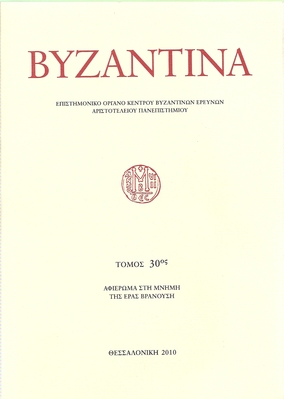Η οργάνωση των αγιορείτικων μετοχίων στην υστεροβυζαντινή Λήμνο
Part of : Βυζαντινά : επιστημονικόν όργανον Κέντρου Βυζαντινών Ερευνών Φιλοσοφικής Σχολής Αριστοτελείου Πανεπιστημίου ; Vol.29, No.1, 2009, pages 259-282
Issue:
Pages:
259-282
Parallel Title:
The organization of Athonite metochia in late byzantine Lemnos
Author:
Abstract:
During the late Byzantine period the extended landed property of the Mount Athos monasteries and Saint John’s of Patmos dominates on Lemnos. The property of each one is organized in productive units (estates) of agricultural and animal husbandry product, that are named metochia, and constitute the main source of supply for monastic foundations on Mount Athos and Patmos; first with the essential for the service of daily needs, while additionally contribute to their wider economic expansion via the sale, mainly, of the production surplus in the empire’s commercial centres, but also with other ways. The above information is provided by the documents kept in the extensive monastic archives of the late Byzantine period.The monastic landed property on Lemnos was exploited by depended farmers of two categories, proskathemenoi, who did not usually own any assets and did not possibly come from the region, and paroikoi, who had the essential advantage of holding cultivable land and paid tax for their lot.Main cereal products were the wheat (Triticum durum) and less the barley. In the same time, viticulture for wine production was very common and profitable. Great parts of metochia, mainly unsuitable for cultivation, were used for sheep and goat husbandry. Information on the produced quantities is not provided by the monastic documents, while the lack of evidence is successfully covered by the early ottoman Tapu-Tahrir Defter #25 for Lemnos dated 1490, very close to the period we study.Finally, the income of monasteries was supplemented with extensive tax exemption and other permissions or benefits granted by the state for each metochion.
Subject (LC):
Notes:
Περιέχει 1 χάρτη, Το άρθρο περιέχεται στο αφιέρωμα στη μνήμη του Δημητρίου Γ. Τσάμη




